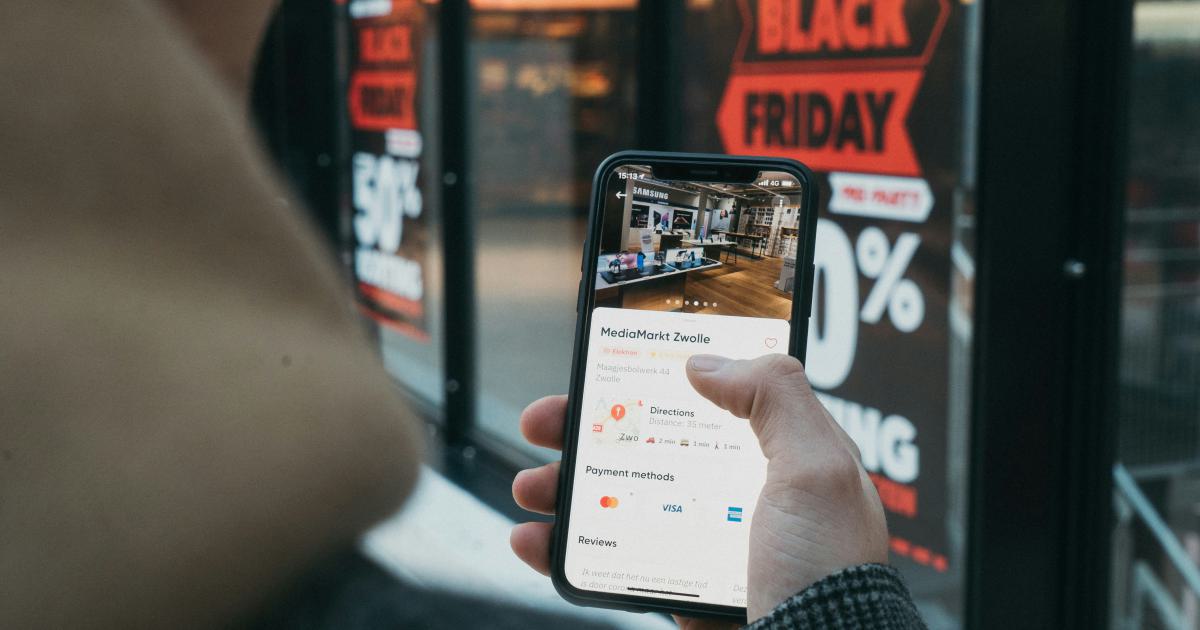Mastering Google Analytics Funnel Visualization for Ecommerce


In the world of ecommerce, understanding customer behavior is crucial for optimizing sales and maximizing revenue. Funnel visualization in Google Analytics provides a powerful tool for tracking and analyzing the journey of potential customers as they navigate through your website. By mastering this feature, businesses can gain invaluable insights into areas of friction, identify opportunities for improvement, and ultimately drive more conversions. This comprehensive guide will equip you with the knowledge and skills necessary to harness the full potential of Google Analytics funnel visualization for your ecommerce business.
Understanding Funnel Visualization
What is a Funnel?

In the context of ecommerce, a funnel refers to the series of steps a visitor takes from their initial interaction with your website to the desired conversion, which is typically a purchase. Each stage of the funnel represents a specific action or touchpoint, such as landing on the homepage, browsing product categories, adding items to the cart, and completing the checkout process.
The Importance of Funnel Analysis
Funnel analysis is crucial for ecommerce businesses because it reveals the points at which potential customers drop off or abandon their journey. By identifying these areas of friction, you can pinpoint the bottlenecks hindering conversions and take targeted actions to address them. Optimizing your funnel can lead to increased sales, improved customer satisfaction, and a better overall user experience.
Setting Up Funnel Visualization in Google Analytics
Before diving into funnel visualization, it's essential to ensure that your Google Analytics account is properly configured to track the necessary data. Follow these steps to set up funnel visualization:
Enable Ecommerce Tracking: Navigate to the "Ecommerce Settings" section in your Google Analytics account and enable "Ecommerce" and "Enhanced Ecommerce Tracking." This allows you to track crucial ecommerce data, including transactions, revenue, and shopping behavior.
Define Funnel Steps: Identify the key stages of your ecommerce funnel, such as homepage, product category pages, product detail pages, cart, and checkout. These steps will serve as the building blocks for your funnel visualization.
Set Up Goals and Goal Funnels: Create goals in Google Analytics that align with your desired conversions. For ecommerce, a common goal is a completed purchase. Additionally, set up goal funnels to track the steps leading to that conversion.
Implement Tracking Code: Ensure that the appropriate tracking code is implemented on your website to capture the necessary data for each funnel step. This may involve working with your development team or utilizing tools like Google Tag Manager.
Once you've completed these steps, your Google Analytics account will be ready to provide accurate and insightful funnel visualization data.
Analyzing Funnel Visualization Data
With your funnel set up and data tracking in place, it's time to dive into the powerful insights provided by funnel visualization. Here's how to access and interpret the data:
Accessing Funnel Visualization Reports
In your Google Analytics account, navigate to the "Conversions" section and select "Funnel Visualization" under "Multi-Channel Funnels."
Choose the appropriate view and date range for your analysis.
Select the goal funnel you want to analyze from the available options.
Interpreting Funnel Visualization Data

The funnel visualization report provides a visual representation of your ecommerce funnel, with each step represented by a horizontal bar. The length of the bar indicates the number of visitors who reached that stage, and the colors highlight areas of drop-off or successful conversions.
Identify Drop-Off Points: Look for steep declines in the bar lengths between consecutive steps. These areas signify where visitors are abandoning the funnel and represent opportunities for optimization.
Analyze Conversion Rates: Pay attention to the conversion rates displayed for each step. Low conversion rates may indicate areas that need improvement, such as confusing user interfaces or ineffective calls to action.
Segment Data: Use the segmentation options to filter the data based on factors like traffic sources, device types, or user demographics. This can reveal valuable insights into how different user groups interact with your funnel.
Identify Trends and Patterns: Look for patterns or trends in the data over time. Are there seasonal fluctuations? Do certain marketing campaigns or website updates correlate with changes in funnel performance?
By analyzing the funnel visualization data, you can pinpoint the areas of your ecommerce funnel that require attention and develop targeted strategies to improve conversion rates and overall performance.
Optimizing Your Ecommerce Funnel
With the insights gained from funnel visualization, you can take actionable steps to optimize your ecommerce funnel and drive more conversions. Here are some strategies to consider:
Improving User Experience (UX)

User experience plays a crucial role in guiding visitors through the funnel. Evaluate each step of the funnel and identify potential areas of friction or confusion. Consider the following UX improvements:
- Streamline navigation and simplify checkout processes
- Enhance product descriptions and visual representations
- Optimize page load times and mobile responsiveness
- Implement clear and compelling calls to action
By addressing UX issues, you can reduce abandonment rates and encourage visitors to progress through the funnel more seamlessly.
Implementing Targeted Remarketing Strategies
Remarketing campaigns can be an effective way to re-engage visitors who have dropped off at various stages of the funnel. Use funnel visualization data to create targeted remarketing audiences based on specific funnel steps. For example:
- Retarget visitors who abandoned their carts with special offers or reminders
- Nurture visitors who browsed products but didn't add them to their carts with personalized recommendations or educational content
By tailoring your remarketing efforts to different segments of the funnel, you can address their specific needs and motivations, increasing the likelihood of conversion.
Leveraging A/B Testing and Personalization
Continuous optimization is key to improving funnel performance. Utilize A/B testing to experiment with different variations of your funnel steps, such as product page layouts, checkout flows, or promotional offers. Additionally, consider implementing personalization strategies based on user behavior and preferences to create a more tailored and engaging experience.
Addressing Technical Issues and Optimizing for Conversions
Funnel visualization may also reveal technical issues or bottlenecks that hinder conversions. Conduct thorough audits to identify and resolve problems related to site speed, mobile responsiveness, or tracking implementation. Additionally, optimize your funnel for conversions by ensuring clear and compelling calls to action, addressing security concerns, and providing attractive incentives or offers at strategic points.
Advanced Funnel Visualization Techniques
As you become more proficient in funnel visualization, consider exploring advanced techniques to gain even deeper insights and optimize your ecommerce funnel:
Integrating Funnel Visualization with Other Analytics Tools
While Google Analytics offers powerful funnel visualization capabilities, integrating it with other analytics tools can provide a more comprehensive view of your customer journey. For example, you could combine funnel data with heat mapping tools to understand how users interact with specific pages or incorporate session recording tools to identify areas of confusion or frustration.
Leveraging Machine Learning and AI for Funnel Optimization
With the rapid advancements in machine learning and artificial intelligence, these technologies can be harnessed to optimize funnel performance. AI-powered tools can analyze vast amounts of data, identify patterns and anomalies, and provide actionable recommendations for improving conversion rates. Additionally, machine learning can be used to create personalized experiences tailored to individual users' preferences and behaviors.
Implementing Predictive Analytics for Funnel Forecasting
Predictive analytics can be a powerful tool for forecasting funnel performance and identifying potential areas for optimization. By analyzing historical data and incorporating external factors, such as market trends or seasonal patterns, predictive models can anticipate future behavior and provide insights for proactive decision-making.
Case Study: Optimizing an Ecommerce Funnel with Funnel Visualization
To illustrate the power of funnel visualization in action, let's examine a real-world case study:

An online clothing retailer noticed a significant drop-off in their funnel at the cart stage. By utilizing funnel visualization in Google Analytics, they identified that a large portion of mobile users were abandoning their carts after encountering a lengthy and complicated checkout process.
To address this issue, the retailer implemented the following strategies:
Simplified Checkout Flow: The checkout process was streamlined, reducing the number of steps and eliminating unnecessary form fields for mobile users.
Mobile-Optimized Design: The website's design was optimized for smaller screens, ensuring a seamless and user-friendly experience on mobile devices.
Remarketing Campaigns: Targeted remarketing campaigns were launched, offering incentives and reminders to users who abandoned their carts.
A/B Testing: Various checkout flow variations were tested using A/B testing to identify the most effective solution for mobile users.
After implementing these changes, the retailer saw a significant increase in mobile conversion rates and a substantial improvement in overall funnel performance, leading to a substantial boost in revenue.
This case study highlights the importance of funnel visualization in identifying areas of improvement and taking data-driven actions to optimize the customer journey.
Mastering Funnel Visualization: Closing Thoughts
Mastering funnel visualization in Google Analytics is an essential skill for ecommerce businesses seeking to unlock the full potential of their online sales. By gaining insights into customer behavior, identifying areas of friction, and implementing targeted optimization strategies, businesses can drive more conversions, improve customer satisfaction, and ultimately achieve greater success in the competitive ecommerce landscape.
Remember, funnel visualization is not a one-time exercise but an ongoing process of continuous improvement. Regularly analyze your funnel data, experiment with different techniques, and stay up-to-date with the latest industry best practices to ensure your ecommerce funnel remains optimized and aligned with evolving customer needs and preferences.
Embrace the power of funnel visualization, and unlock new levels of ecommerce success for your business.